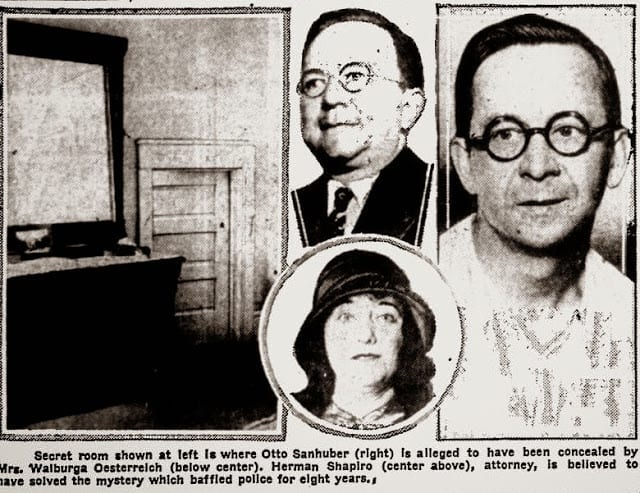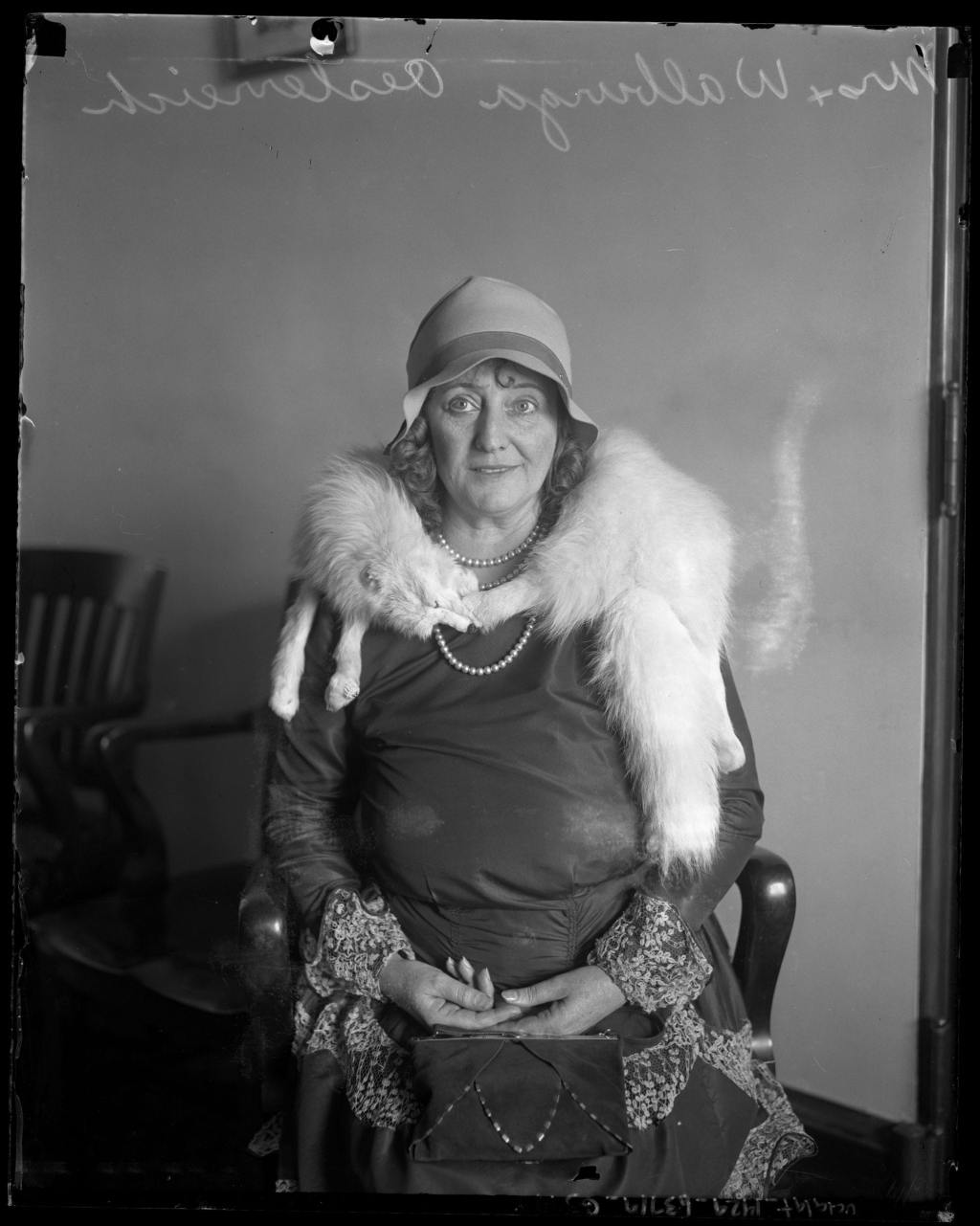When Walburga “Dolly” Oesterreich’s wealthy husband was shot to death in their Los Angeles home, Dolly claimed he had been gunned down “by a burglar.” This would prove to be the least outrageous and lurid of the details that eventually emerged from this shocking case.
Dolly was still fairly young when she married her husband, Fred Oesterreich. Fred was an apron manufacturer, described as a “skinflint with an iron will.” The pair lived in Milwaukee, Wisconsin where Dolly is believed to have had several brief extramarital affairs before she met then-17-year-old Otto Sanhuber around 1913.
Versions of how the two met vary. In most accounts, Dolly is said to have seen Sanhuber, who was a repairman for her husband’s factory, working on the sewing machines on the factory floor. After that, she asked her husband to send Sanhuber to their home to repair her sewing machine. She met him at the door wearing a silk robe, stockings, and little else. While Sanhuber repaired the sewing machine in her bedroom, Dolly watched from the bed, her robe seeming to come open a bit more each time he looked up.
The two began an affair that would last for more than a decade and culminate in the death of Dolly’s husband. When a neighbor noticed the frequency of Sanhuber’s visits to the Oesterreich home, Dolly came up with a plan that would enable them to be together without fear of discovery. She suggested that Sanhuber move into the attic above her bedroom. The young man quickly agreed, not only because the arrangement put him in closer proximity with his lover, but because it gave him the freedom to pursue his interest in writing for the pulps. Sanhuber came out during the day only to make love to Dolly Oesterreich. At night, he worked on his writing by candlelight.

Photo Credit: Wikipedia
When the Oesterreichs moved to Los Angeles in 1918, Dolly sent Sanhuber on ahead so he would be there when she arrived. She required her husband to find a house with an attic. And so, Sanhuber resumed his strange existence, which he would later describe as being Dolly’s “sex slave,” writing in the attic by night. This continued until one day in 1922, when Dolly and her husband returned home and began to argue. As the quarrel grew louder, Sanhuber came down from the attic to protect his lover, a pistol in each hand.
What happened next varies somewhat in the telling. One way or another the guns went off and Fred Oesterreich died. Sanhuber locked Dolly in a closet and scurried back to his hiding place in the attic. When the police arrived shortly thereafter, alerted by a neighbor who had heard the shots, Dolly was able to claim that a burglar had broken into the house, killed her husband, and locked her up. Police were suspicious, but couldn’t explain how Dolly would have been able to lock herself up.
In the wake of her husband’s death, Dolly moved into a new house, with a new attic for Sanhuber to occupy. He now owned a typewriter for writing his stories, but otherwise continued an existence much like the last 10 years. Meanwhile, Dolly began a new affair with her estate attorney Herman Shapiro—and a businessman named Roy Klumb. She even asked Klumb for a particular favor: She said that she had a gun very much like the one that had killed her husband, and she was worried that the police might become suspicious. She asked Klumb to get rid of it for her. He obliged and threw it into the La Brea Tar Pits. She told a similar story to one of her neighbors, who buried the second gun in his back yard.

Photo Credit: Strange Co.
Eventually, Dolly’s relationship with Klumb came to an end, and he told the police what he knew. Soon after, Dolly’s neighbor also came clean, unearthing the second gun and presenting it to authorities. Yet it had been damaged so much by its disposal, that authorities struggled to determine whether it had fired the fatal shots. As the investigation moved forward, Dolly was arrested, and while she was in jail asked Shapiro to bring food to the attic of her home. Sure enough, when Shapiro climbed up the steps to the top floor, he found Sanhuber. The mystery man told the attorney all about the strange years he had spent as Dolly’s “sex slave.”
Soon after this encounter, Sanhuber moved out. Shapiro moved in—though not into the attic. The truth behind Fred’s death remained under wraps, and Dolly was released from jail. It wasn’t until several years later, when Shapiro and Dolly broke up and Shapiro went to the authorities with what he knew, that any further arrests were made. Sanhuber was captured and charged with manslaughter, but ultimately released because the statute of limitations had already run out. Dolly was arrested once again and charged with conspiracy, though the indictment was dropped in 1936 due to a hung jury.
Thus ended the lurid “Bat Man” case of Los Angeles. It would go on to inspire the 1968 film The Bliss of Mrs. Blossom and the 1995 made-for-TV movie The Man in the Attic, starring Neil Patrick Harris as the stand-in for Otto Sanhuber. For her part, Dolly Oesterreich lived in Los Angeles until her death in 1961, though if she had any more lurid adventures during that time, no one has yet discovered them.
This story was first published on The Lineup
Read more below:
9 American Horror Story Characters Based on Real-Life Killers
8 Real-Life Cabin in the Woods Murders That Will Make You Lock Your Doors






